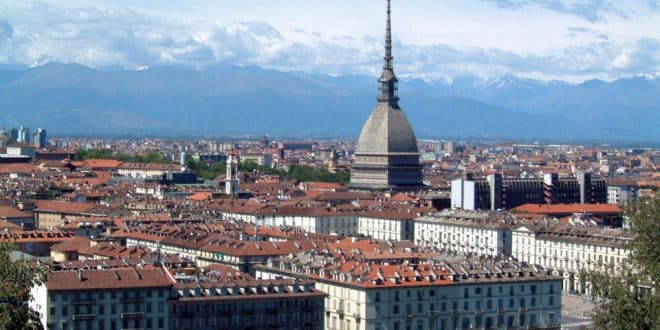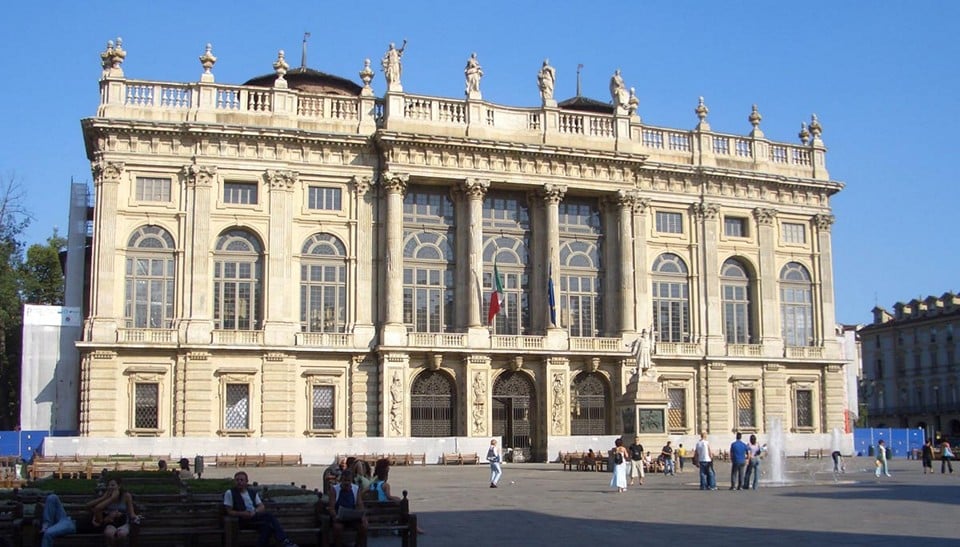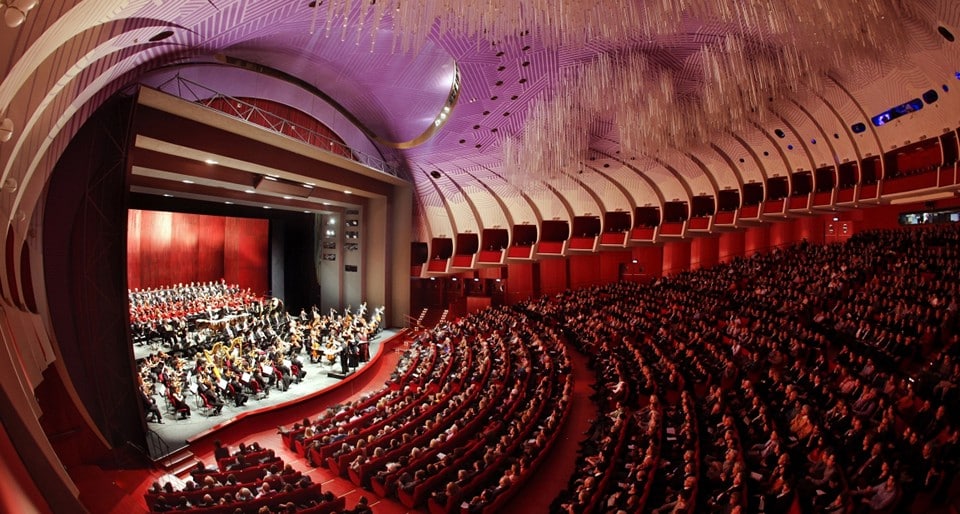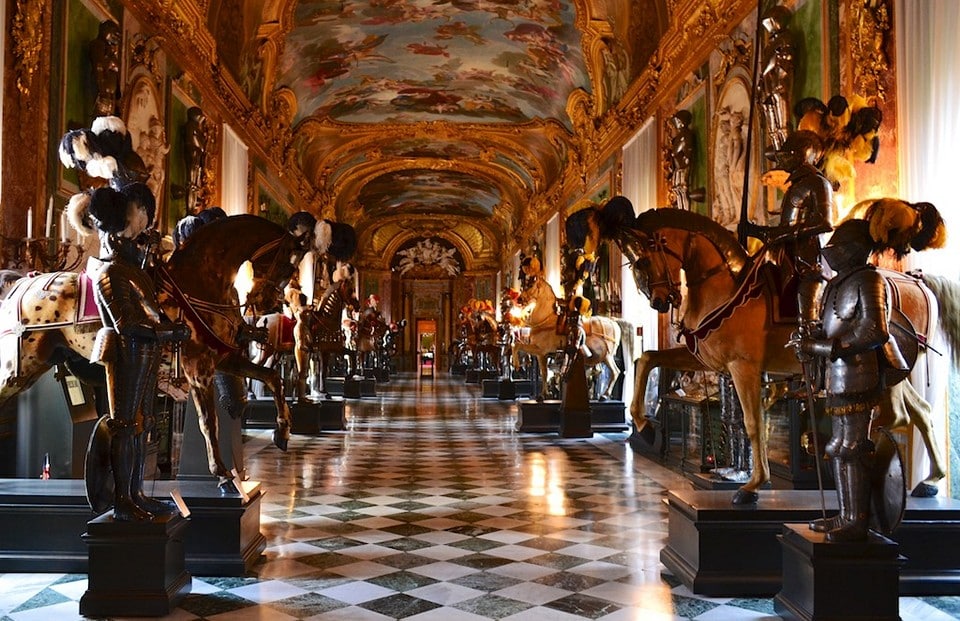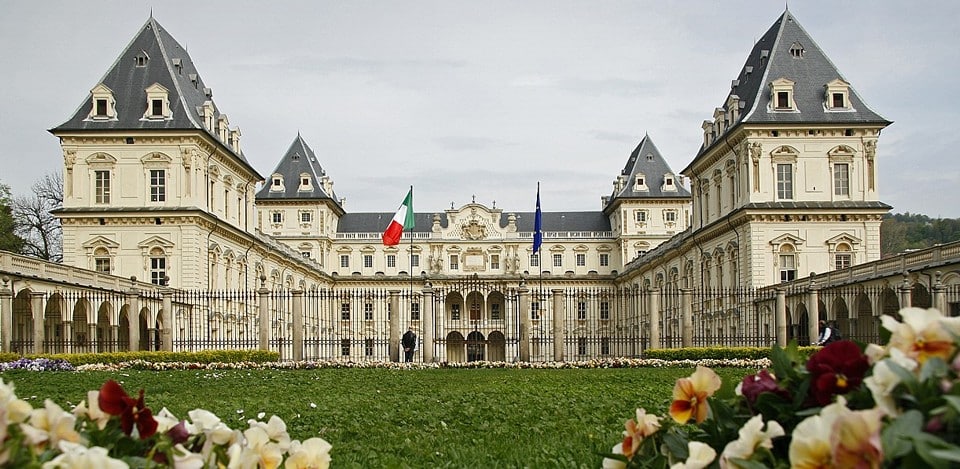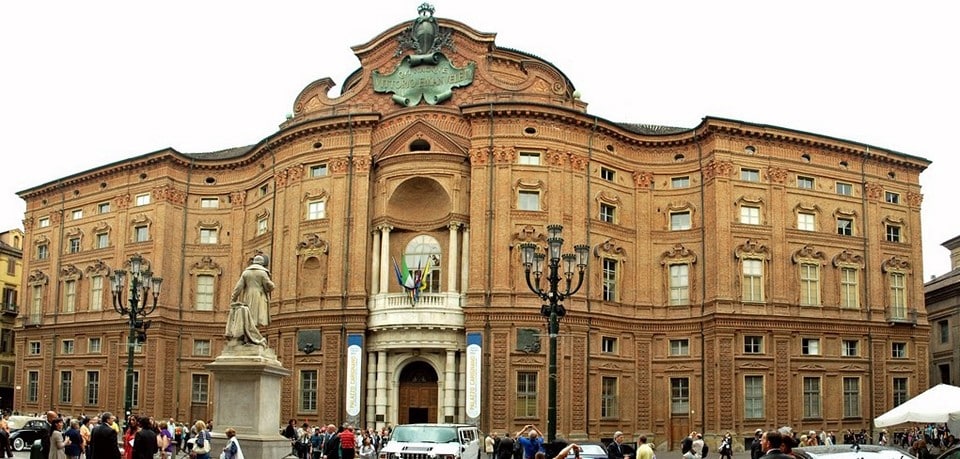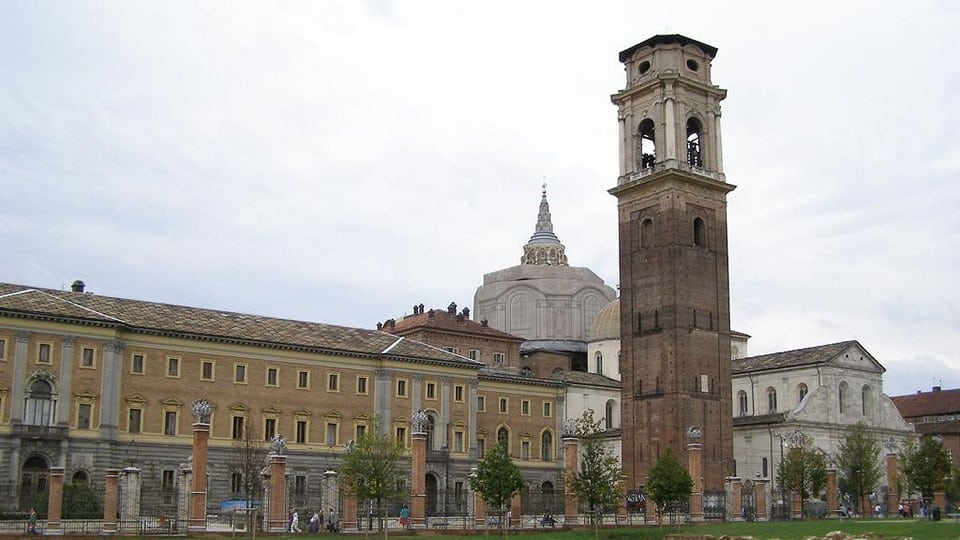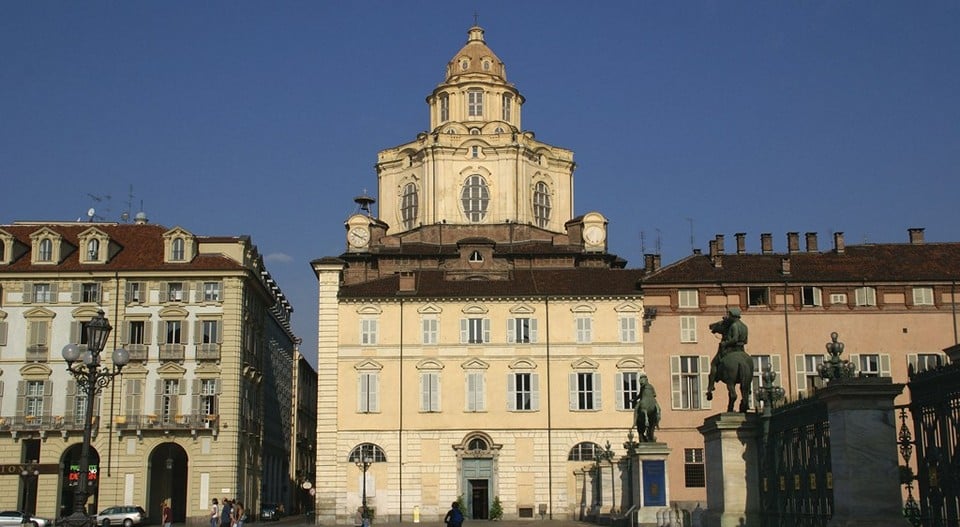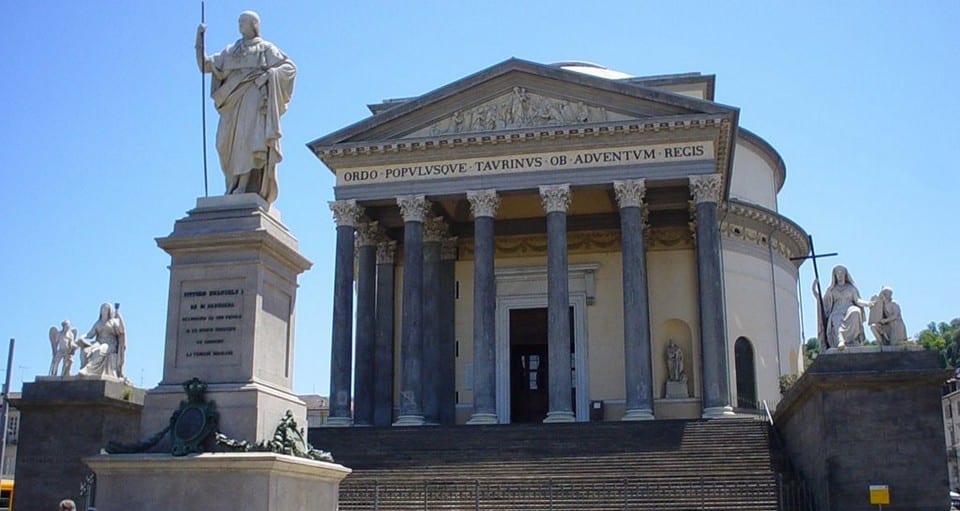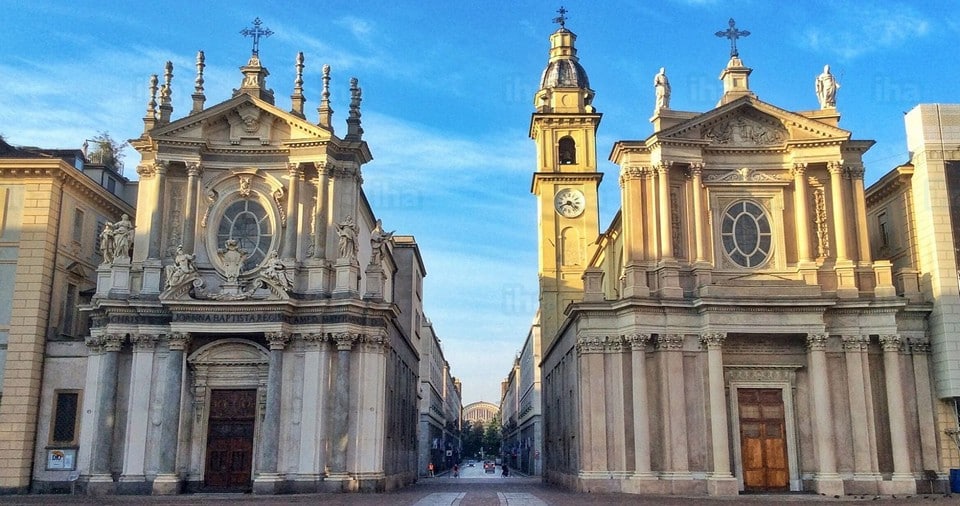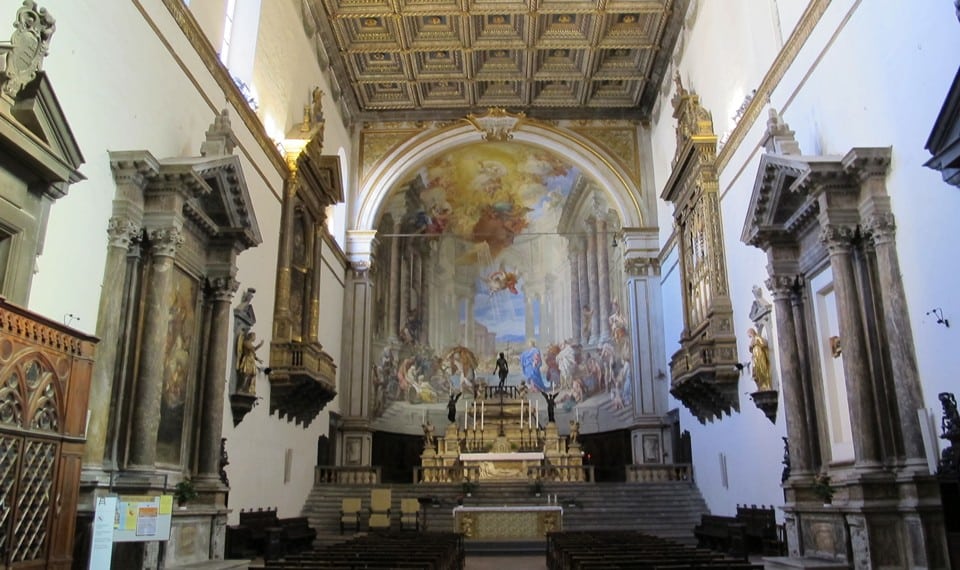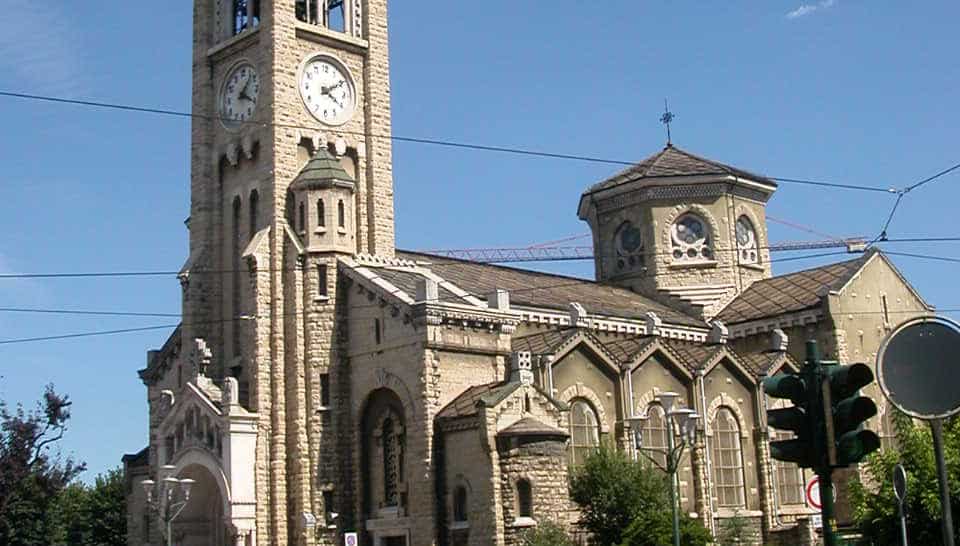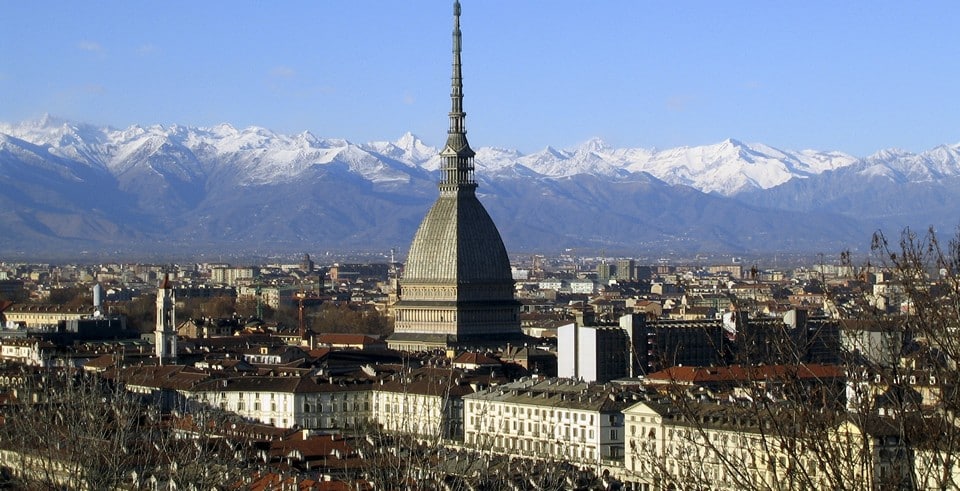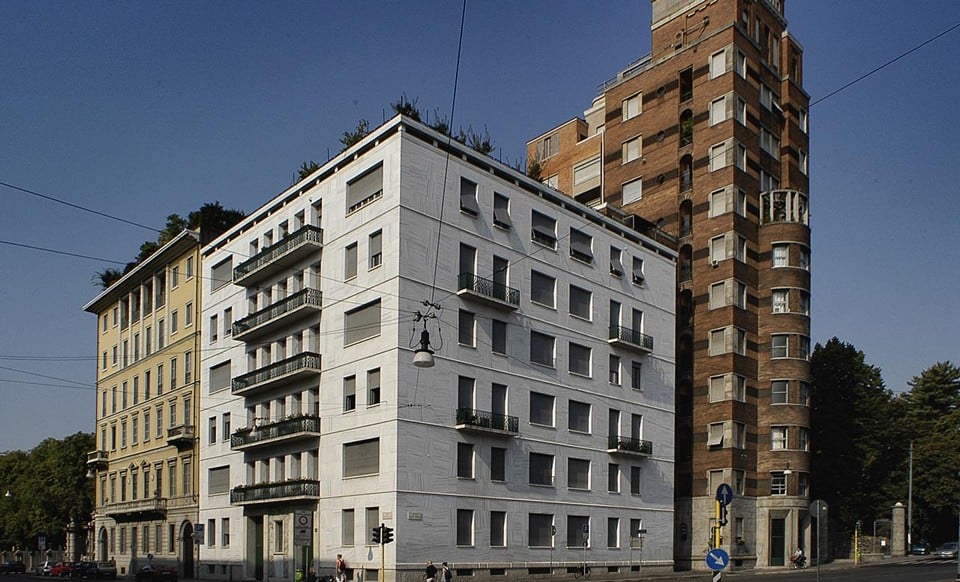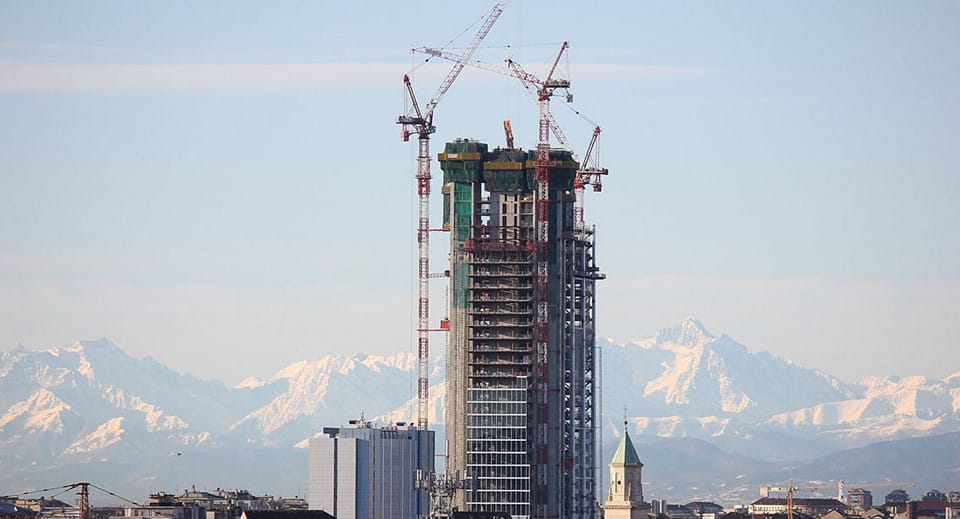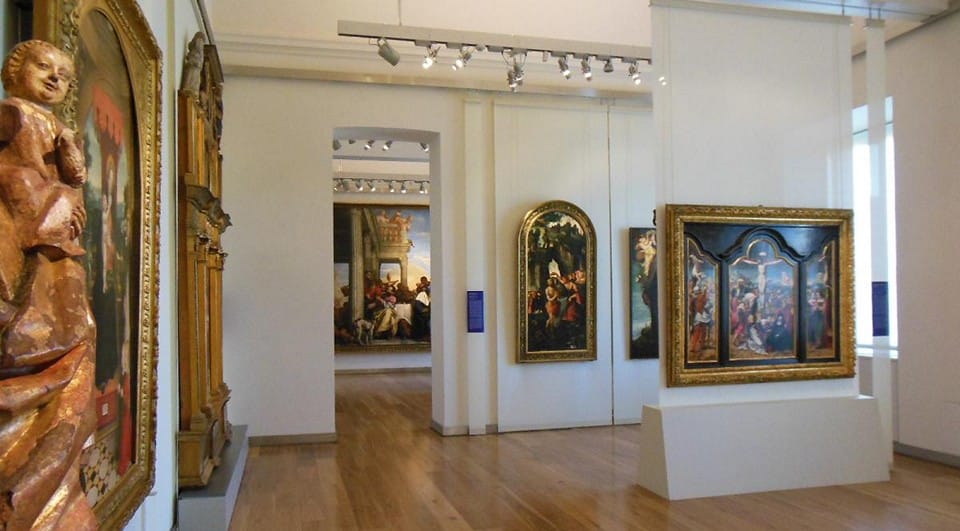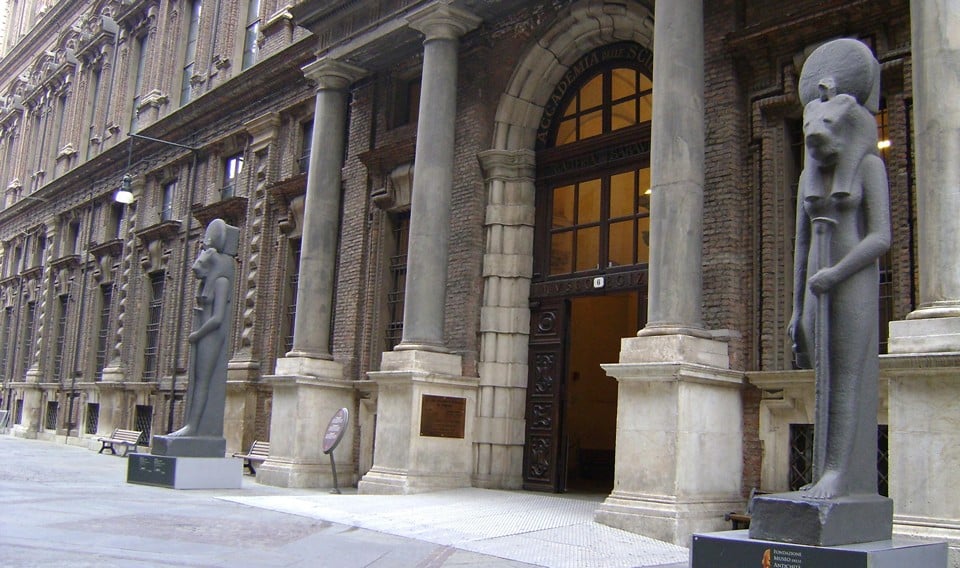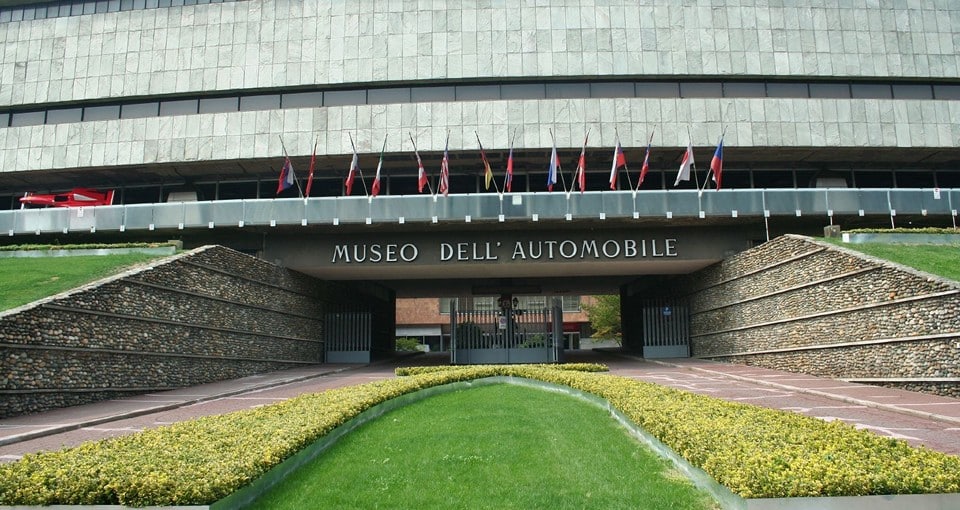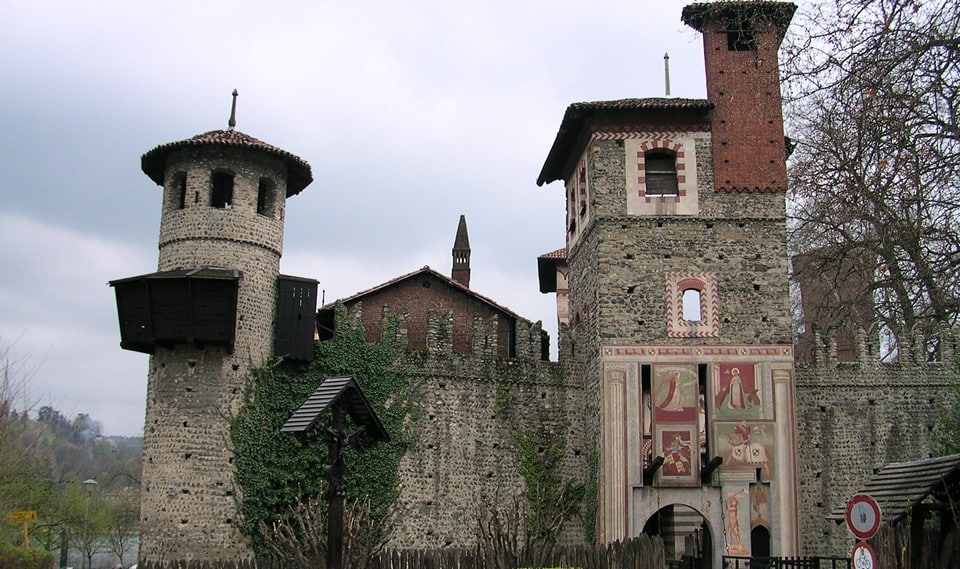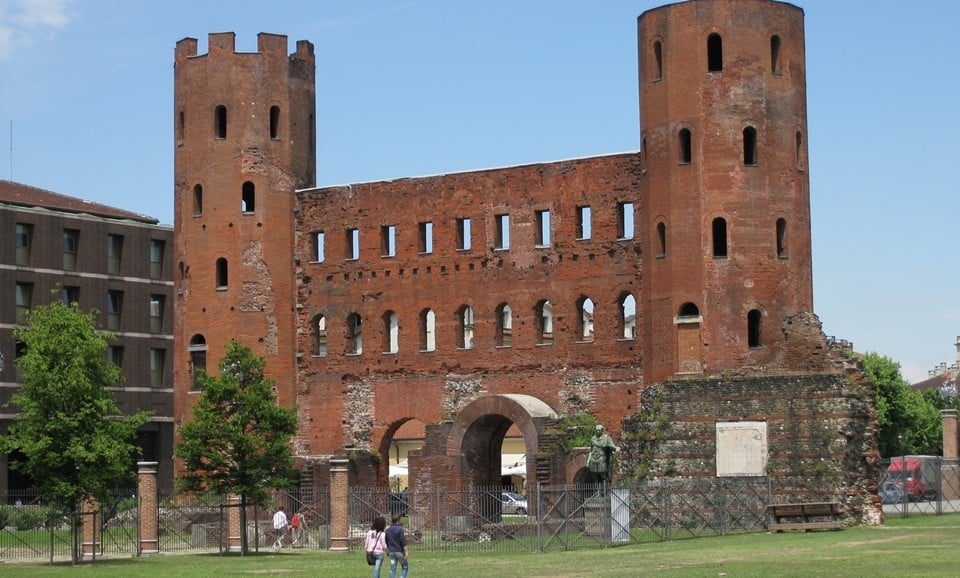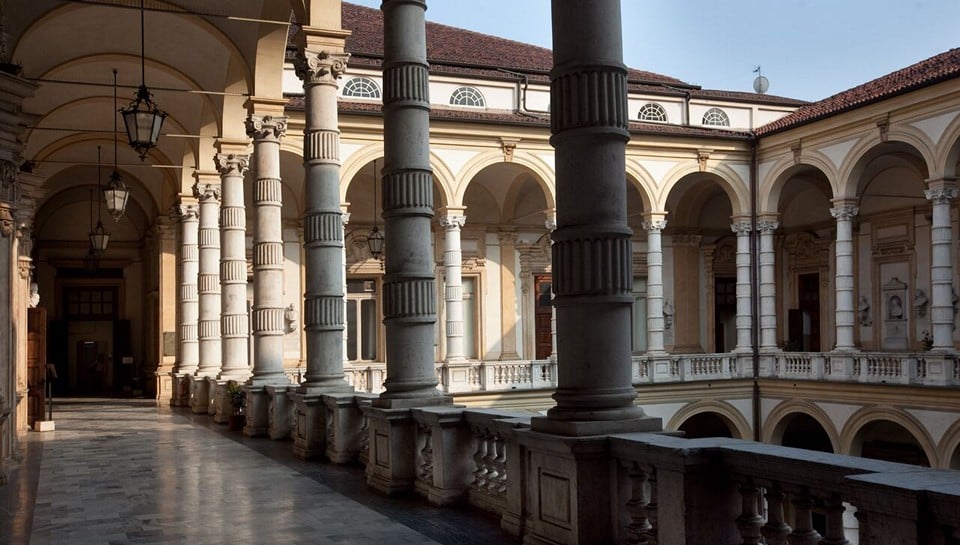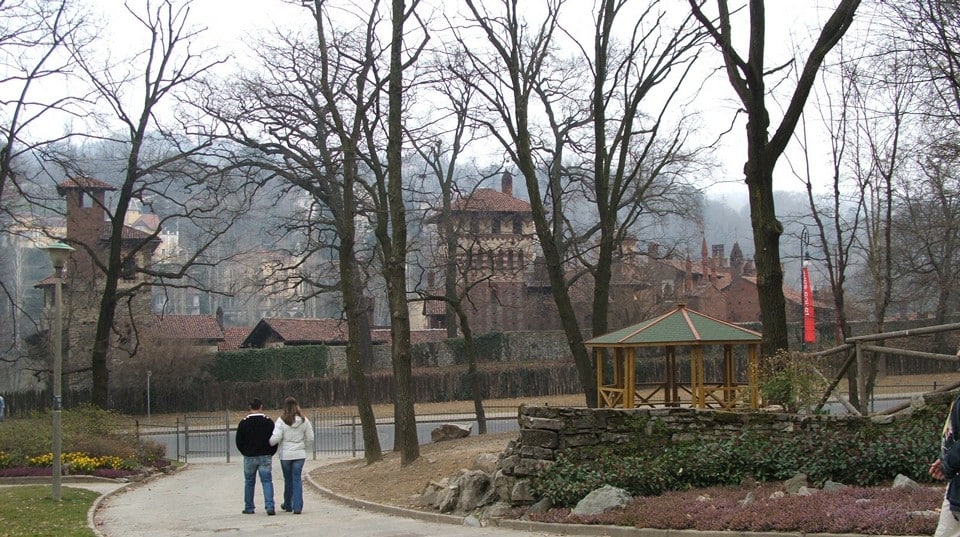Torino (Turin) is a city where kings were born, lived, and died. That’s why among the attractions here, there are numerous royal residences, magnificent castles, museums, and art galleries.
Here, you can see weaponry of the Savoy kings, a church resembling an ancient Roman Pantheon, a building resembling a synagogue depicted on the two-euro cent coin. And in one of the Catholic churches, one of the most famous Christian relics is preserved – the Shroud of Turin.
Page Contents
Location of Turin
Turin is situated northwest of Rome (Roma) at a distance of 522 km, and it serves as the administrative center of Piedmont (Piemonte). The city is located near the Western Alps (Alpi Occidentali), where the Dora Riparia flows into the Po River. On a geographical map, you can locate it at the following coordinates: 45°04′ north latitude, 7°42′ east longitude.
The city covers an area of 130 square km, and it’s home to over 900,000 people. Thanks to this, Turin ranks fourth in Italy in terms of population.
The historical center, with an area of over four square kilometers, was once surrounded by walls. Those walls were long demolished, so it’s commonly considered that its territory is bounded by the avenues of Corso San Maurizio, Corso Regina Margherita, Corso Bolzano, Corso San Martino, and Corso Vittorio Emanuele II. On the southeast side, the center borders the Po River.
Piazza Castello
The central square of Turin is Piazza Castello: it has often been the venue for important events. For instance, during the 2006 Winter Olympics, the Olympic champions and medalists were awarded here.
Piazza Castello has a long history, and as a result, many interesting attractions are located here. You can see a medieval fortress with the facade of a castle (Palazzo Madama), Teatro Regio di Torino, and the Prefecture building with a covered gallery. The Royal Armory (L’Armeria Reale) houses the largest collection of armor and weapons in Europe. Four fountain installations rise from the ground in the middle of the square.
On Piazza Castello, three significant monuments stand:
- Equestrian monument to the Knight of Italy (Monumento equestre al Cavaliere d’Italia).
- Monument to the Standard-Bearer of the Sardinian Army (la Statua dell’Alfiere dell’Esercito Sardo) – erected in front of Palazzo Madama in 1859, before the start of the Second War of Independence.
- Monument to General Duke Emanuele Filiberto (Emanuele Filiberto) – placed behind Palazzo Madama.
From Piazza Castello, Via Palazzo di Citta’ 4 starts from the side of the Royal Square. Here stands the royal court church of Saint Lawrence (Chiesa di San Lorenzo).
Four main streets of Turin adjoin Piazza Castello. Among them is Via Garibaldi, which measures 963 meters in length. While not the longest pedestrian street in Europe, it securely holds the second place. Adjacent to Piazza Castello at an angle is Piazzetta Reale, where the Royal Palace (Palazzo Reale) is situated.
Palazzo Madama
The central building of the square is Palazzo Madama (Palazzo Madama e Casaforte degli Acaja). Its history dates back to the 13th century when a fortress was constructed on the site of the old city gates. A century later, the fort was expanded, given a rectangular shape, and an inner courtyard was arranged. Four corner towers and a covered gallery were added.
Until the late 15th century, the castle belonged to the Acaja family (a junior branch of the House of Savoy). When the Acaja line ended, representatives of the House of Savoy used the landmark as a guesthouse. For instance, King of France Charles VIII (Carlo VIII) stayed here during his campaign against the Kingdom of Naples (regno di Napoli). The castle also hosted solemn events where the Shroud of Turin was exhibited.
The name of the castle owes itself to two distinguished residents who lived here in their time. In the early 17th century, Maria Cristina of Bourbon-France (Maria Cristina di Borbone-Francia) settled here, and under her orders, the castle was reconstructed. Sixty years later, Maria Giovanna Battista of Savoy-Nemours (Maria Giovanna Battista di Savoia-Nemours), another influential woman of Turin, took up residence here.
In the 17th century, some parts of the fortress were dismantled or hidden, including the old drawbridge. Nowadays, the castle has an unusual appearance. On one side, there’s a monument, fountains, and benches. Columns, balustrades with statues and vases are also present. On the other side of the palace, two round dark-brown towers on the sides of the building, with battlements visible at the top, remind visitors of the castle’s original purpose. Small openings are visible all along the height of the towers and facade, where swallows nest (locals have affectionately nicknamed the building “the swallows’ sanctuary”).
After the castle came under the city’s ownership, it housed an astronomical observatory and an art gallery. At different times, the building served as a government residence, a court, and a parliament. Today, it is an ancient art museum.
The Royal Theater
The Royal Theater (Teatro Regio di Torino), although considered one of the oldest opera theaters in the country, has a history of about a century: the old building was destroyed by fire in 1936, and its reconstruction took forty years. Nevertheless, the people of Turin are proud of the theater and call it the Royal Theater.
Construction of the first building on Piazza Castello began in 1738 under the orders of Duke Carlo Emanuele III of Savoy (Carlo Emanuele III di Savoia). The theater was built at a record pace: it opened just two years later. It was a magnificent building with 2,500 seats arranged on five tiers. Teatro Regio was popular, and for the opening of each season, two opera seria were performed.
In 1792, the Royal Theater closed and reopened six years later when Napoleon Bonaparte’s forces occupied the city. The repertoire was adapted to the tastes of the French audience, and the theater was visited thrice by Bonaparte.
In 1870, Teatro Regio became municipal. Thirty-five years later, it underwent a major reconstruction: the fourth and fifth tiers disappeared, and the amphitheater expanded. When World War I began, the opera theater closed and reopened after its end in 1919. The theater was mostly destroyed by fire in 1936, with only the facade remaining.
The opening of the new building took place in 1973. The 18th-century facade was preserved, while the interior of the building caters to the demands of the modern audience. The auditorium took on an elliptical shape and seats 1,750 people.
The Royal Armory
The Royal Armory (L’Armeria Reale) boasts one of the most extensive collections of antique weaponry and armor. The arsenal is located on Castello Square, situated between the Prefecture and the nearby Royal Palace Square (being part of it, a ticket to visit the palace includes access to the Armory).
The idea to create an arsenal arose from King Carlo Alberto of Sardinia, and it opened in 1837. Among the exhibits, you’ll find not only the armor and weapons of medieval knights and later eras but also tools for protection and attack used by people in the Stone Age.
The armory houses weapons that belonged to the Savoy kings, including a relic of the royal house – the San Maurizio sword. Of interest are the medals, coins, seals, and precious items from the collection of Carlo Alberto of Savoy. These are displayed in a specially designed hall furnished in a neoclassical style.
Palaces in Turin
Since Turin is a city where members of the ruling House of Savoy (Casa Savoia) resided for a long time, there are many palaces here. The main ones among them include the Royal Palace, located on the square of the same name near Piazza Castello. However, there are plenty of other castles where kings lived. Tourists should definitely visit them.
The Royal Palace
The Royal Palace (Palazzo Reale) is situated on Piazzetta Reale. Separating it from Castello Square is a wrought-iron fence and two bronze horsemen. Passing between them, the traveler finds themselves in front of the palace. For two hundred years, this landmark has been the main residence of the House of Savoy (Casa Savoia).
The modern building was constructed in the second half of the late 16th century on the site of the Episcopal Palace and the Old Castle. Its first owner was Maria Cristina of Bourbon-France (Maria Cristina di Borbone-Francia). When the capital of unified Italy was moved from Turin to Florence (Firenze) in 1865, and later to Rome, the castle lost its significance, and kings visited it only occasionally.
In the architecture of Palazzo Reale, masters managed to skillfully combine three different styles – Rococo, Baroque, and Neoclassical. The length of the palace’s facade is 170 meters, with two taller pavilions on its right and left sides. One of them houses the Royal Library (Biblioteca Reale di Torino). Ancient manuscripts are collected here, and there is even a self-portrait by Leonardo da Vinci.
In front of the central entrance of the castle, statues of the heroes of Greek myths, Pollux and Castor, are installed. Behind the palace, the Royal Gardens (Giardini Reali) stretch out. They are adorned with fountains and sculptures.
While the exterior facade is austere, the interiors are luxurious. Here, you’ll find paintings, antiques, tapestries, jewels, and in the niches of the spacious hall – statues of members of the House of Savoy. Everywhere there’s dazzling gold and ornate decorations. Attention is drawn to the grand staircase, Scala delle Forbici, the Throne Room, the Blue Hall for audiences, and the private chambers of the kings. Visitors have access to about thirty rooms in total.
Valentino Castle
Valentino Castle (Castello del Valentino) is situated on viale Pier Andrea Mattioli, 39, along the banks of the Po River. The first mention of the palace dates back to the 13th century. It was a well-fortified structure designed for defense against enemy raids. The landmark owes its name to the remains of Saint Valentine, the patron saint of lovers, which were kept in the nearby church of Saint Vitus (no longer preserved).
The modern appearance of Castello del Valentino is attributed to Maria Christina of Bourbon-France, under whose orders the building was transformed in the French style. As a result, the landmark has an unusual look: from the riverside, the house resembles a fortress with its surviving corner towers, which rise above the facade. From the front, it’s a beautiful, elegant palace, its courtyard paved with marble. The coat of arms of the House of Savoy is displayed on the facade.
After Maria Christina’s death, the house fell into decline. When the French captured the city, it was plundered. Subsequently, barracks were set up here, followed by an engineering school. In the 20th century, the castle underwent restoration, and now it houses the architecture faculty of the Turin Polytechnic University (Politecnico di Torino).
Tourists can only enter the interior on Saturday mornings, by prior arrangement. If you can’t visit the palace during this time, you can stroll through the park and admire the facade of the landmark.
Queen’s Villa
Queen’s Villa (Villa della Regina) is located on Strada Santa Margherita, 79. The palace, perched on the Turin hill, is surrounded by a magnificent garden with terraces, fountains, and grottoes.
The villa first emerged in the early 17th century by the order of Prince Cardinal Maurice of Savoy. After his death, it changed hands several times until in 1692, the residence came into the possession of Anne Marie d’Orléans, the niece of the French King, and the wife of Victor Amadeus II, Duke of Savoy. When her husband became king, the villa was named Villa della Regina.
The new status had a positive impact on the palace’s appearance: the decor was renewed, and the garden underwent some layout changes. Anne Marie’s eldest daughter imparted Versailles-like characteristics to the villa.
After the Savoy court was moved to Rome in the late 19th century, Villa della Regina ceased to be a royal residence and remained neglected for a long time. It suffered significant damage during World War II bombings. In the late 20th century, the villa was restored and opened to visitors. Here, one can see frescoes and paintings by renowned masters, as well as Chinese gilded wood chests. The garden features a pavilion where members of the intellectual club founded by Maurice of Savoy used to meet.
Palazzo Carignano
Located three hundred meters from the Royal Palace is Palazzo Carignano. Construction of this landmark began in the late 17th century. The design was created by Guarino Guarini for one of the branches of the Savoy dynasty, the Carignano family.
The castle’s structure is considered one of the boldest Baroque-era solutions. A prime example of this is the curved staircase and double dome above the main hall. The palace’s rooms are adorned with frescoes by Stefano Maria Legnani.
The building has two facades. The older one is made of red brick, characterized by a wavy form, and faces Piazza Carignano. Beneath the windows of the first floor, there is a frieze depicting Iroquois in commemoration of the local regiment’s victory over the tribe. The other facade, more traditional in style, faces Piazza Carlo Alberto. It appeared much later when the parliament of unified Italy, which convened here, decided to expand the palace. This was accomplished in the 1860s.
It was in this house in 1820 that the first king of unified Italy, Victor Emmanuel II, was born. Currently, the National Museum of the Risorgimento is housed here, commemorating the national liberation struggle for Italy’s freedom.
Churches in Turin
Turin is a city where kings resided for a long time. Consequently, the churches here are quite unique. Among them is a temple where the Turin Shroud is preserved, as well as a church where kings prayed and glorified God. Not far from the city, there is a basilica where representatives of the ruling dynasty found their final resting place. Of interest is also a neo-Gothic style temple, as well as a church built with inspiration from the Greek Pantheon. Twin churches will also capture the attention of curious tourists.
Cathedral of Saint John the Baptist
In the Basilica of Saint John the Baptist (Duomo di San Giovanni) lies one of the most significant Christian relics—the Turin Shroud (Sindone di Torino). According to one theory, the body of Christ was wrapped in it after his death on Golgotha.
The relic is kept in a fireproof container, maintaining a specific temperature. Tourists can see the relic once every 25 years (last displayed in 2010) for 40 days. The rest of the time, pilgrims and the curious are presented with a copy of the shroud.
Duomo di San Giovanni is situated on Piazza San Giovanni, just behind the Royal Palace. It was constructed in the late 15th century by the order of Cardinal Domenico della Rovere. The façade is crafted from white Carrara marble, with chapels flanking its sides. Two centuries later, the Chapel of the Holy Shroud was added to the temple. In the late 20th century, it suffered significant fire damage, and restoration efforts are currently underway (fortunately, the Shroud was unharmed).
Church of Saint Lawrence
The façade of the Basilica of Saint Lawrence (Chiesa di San Lorenzo) is scarcely distinguishable from the adjacent buildings. Only the dome atop the structure and some details on the walls hint at its status as a church. However, its interior conceals extraordinary beauty: in terms of adornment, it stands as one of Turin’s most opulent churches. After all, it once housed the royal chapel of the Savoy rulers and for a time, even safeguarded the Turin Shroud upon its arrival from France.
Located on the corner of Piazza Castello and Royal Square, specifically on Via Palazzo di Citta’, 4, the church boasts a deliberately modest façade. The Savoy rulers, who commissioned the basilica’s construction in the 17th century, believed that nothing should distract from the nearby Royal Palace and Palazzo Madama. Yet inside, the basilica is adorned in a truly royal fashion.
The church itself is not large, designed in an octagonal shape, lavishly ornamented in the Baroque style, and its dome, with an illuminating lantern, seems to float in the air. Of particular interest is the main altar, adorned with geometric figures, precious stones, twisted columns, and gilded wooden grilles. The Holy Stairs lead to it, and one can ascend the central part only on their knees (twelve steps), while the side sections are ascended in the usual manner. The church’s organ is housed within a gilded wooden casing.
Temple of the Great Mother of God
The Temple of the Great Mother of God (Chiesa della Gran Madre di Dio) is situated on Gran Madre di Dio Square, not far from the banks of the Po River, near the hills. The construction of this landmark was linked to the victory over Bonaparte and the restoration of Victor Emmanuel I (Vittorio Emanuele I), the King of Savoy, to the throne. The basilica was opened in 1831 in the presence of King Carlo Alberto (Carlo Alberto di Savoia).
Externally, the temple resembles a pantheon, with a grand staircase leading to it. At the foot of the staircase stands a marble statue of Victor Emmanuel I. Statues depicting Faith and Religion are positioned on the right and left sides of the staircase. Niches with statues of saints Mark and Barromeo are situated near the portal in the facade. A bas-relief on the pediment features the Madonna and Child.
Due to architectural considerations, a bell tower wasn’t initially planned near the church. It was built in 1830 slightly aside, near Via Bonsignore.
Superga Basilica
Although the Superga Basilica (Basilica di Superga) is located ten kilometers from Turin, every tourist visiting the city should see it. Savoy kings found their final resting place here, and the basilica offers a magnificent view of the city, the Po River, and the Alps.
The church was constructed on a hill in the early 18th century. According to legend, Victor Amadeus II (Vittorio Amedeo II) climbed the hilltop to assess the position of enemy forces that had occupied Turin. He vowed to the Virgin Mary that if successful, he would build a church here – a promise he fulfilled. When Victor Amadeus II passed away, he was interred in this church. Since then, it has become the burial site for members of the Savoy dynasty.
In the mid-20th century, a tragedy struck. An airplane carrying the local football team lost its bearings and crashed into the fence of the temple… none survived. A memorial dedicated to the deceased football players now stands at the crash site.
The church is located at Strada Basilica di Superga, 73. It’s a two-hour walk from the city’s central square. If time is limited, taxis are available (the ride costs 20 euros), or you can take the funicular from the Sassi station.
Twin Churches
On Piazza San Carlo, twin churches (Le Chiese Gemelle) rise in the Baroque style. They are separated by a narrow street.
Facing them, on the left, stands the Church of Saint Christina (Chiesa di Santa Cristina). In 1640, Maria ordered its construction in memory of her deceased eldest son, Christina of France. However, the architect passed away the following year, causing the construction to be delayed: the facade appeared seventy years later.
On the right is the Church of San Carlo Borromeo (Chiesa di San Carlo Borromeo). It was named after the saint who came to the city to pray before the Holy Shroud. It was erected earlier, by order of Carlo Emanuele I di Savoi, in 1619. The modern facade took shape in the 19th century.
Church of the Most Holy Annunciation
The Basilica of the Most Holy Annunciation (Chiesa della Santissima Annunziata) is situated on Via Po, 45 (the street starts from Piazza Castello and leads to the river).
The first building was erected in the 17th century. The church had a simple structure, with only one nave. Later, it was expanded, the choir was enlarged, and two chapels were added. In the 18th century, Bernardo Antonio Vittone installed an altar, and a wooden processional platform was introduced.
The facade of the church was completed in 1776, and a century later, an arcade was added, giving the church a grand appearance.
By the end of the 19th century, the church’s brothers faced financial difficulties, leading to its deterioration. In 1913, the old church was demolished, and six years later, construction of a new building began, drawing inspiration from Roman Baroque architecture. The construction was finalized in 1934, and today, many consider the Basilica of the Most Holy Annunciation one of the city’s most beautiful churches.
Church of St. Rita
The Church of St. Rita (Chiesa S. Rita da Cascia) was built in the Neo-Gothic style in the early 20th century. As a result, its exterior appearance stands in stark contrast to other churches in the city, resembling more the churches of Germany. The basilica is located at Via Vernazza, 38, away from the historical center of the city, near the Olympic Stadium.
Turin Skyscrapers
Turin is a city where buildings are not tall by nature, and skyscrapers have only recently emerged, primarily on the outskirts. Yet some of them have also been constructed in the historical part of the city, capturing the attention of both residents and visitors. Among them is Turin’s first skyscraper, the Mole Antonelliana Tower, built in the late 19th century, as well as a skyscraper known as the “Finger of Mussolini,” ordered to be built by the dictator before World War II.
Mole Antonelliana
The Mole Antonelliana Tower is a symbol of Turin and is even featured on the two-euro cent coin. This landmark is located at Via Montebello, 20, and is visible from many parts of the city.
Construction of the tower began in 1863 upon the request of the Jewish community, which aimed to build a prayer house with a school. Alessandro Antonelli was entrusted with the task of designing the tower. He introduced several changes to the project, significantly increasing the tower’s height to 167.5 meters in the final design. This led to higher costs and prolonged construction timelines. The Jewish community was dissatisfied and withdrew from the project, resulting in a freeze on construction for several years.
Later, the city purchased the building from the Jewish community, offering them an alternative site. The towering structure was then dedicated to Italy’s first king, Victor Emmanuel II. Construction resumed, and although Antonelli did not live to see its completion, the Mole Antonelliana was finished in 1889.
It stands as a tall, square-based building with a dome on top. At its summit, a small room with columns, the Tempietto, was created, providing a magnificent view of Turin (accessible by elevator).
In 1953, a strong wind knocked down the 47-meter dome of the tower. However, within eight years, the structure was restored to its original state. This time, architects chose to use steel for the dome’s interior.
Initially, the building housed the Risorgimento Museum. Currently, it is home to the National Museum of Cinema.
Palazzo Mussolini
At Castle Square, the attention of tourists is drawn to the nearby first Turin skyscraper called the Littoria Tower (Torre Littoria), nicknamed “Mussolini’s Palazzo” (il dito di Mussolini). This 19-story building is located on Via Giovanni Battista Viotti. Its height is 87 meters (285 feet), and with the spire, it reaches 109 meters (358 feet).
The name of the skyscraper was not given by chance: Mussolini ordered its construction to be used as the headquarters of the fascist party. Construction began in 1933, and the building was erected in a record-short time: within a year. The skyscraper was built with funds from the Reale Mutua Assicurazioni company, which still owns it today (currently housing offices and apartments).
It is said that Mussolini deliberately chose to build the Torre Littoria amidst the old palaces to juxtapose the emerging new era with the departed monarchy. However, this plan did not turn out well: standing somewhat decent on its own, the skyscraper does not blend well with the surrounding castles and, according to many, disrupts the view of the historical city center.
Intesa Sanpaolo
In 2015, a new landmark appeared in Turin, often referred to as the new symbol of the city. It’s the Intesa Sanpaolo skyscraper located at Corso Inghilterra, 3.
This 35-story building combines glass, steel, and green oases, designed in an eco-friendly style. It features geothermal energy supply (obtained from the Earth’s natural heat) and a specialized facade cladding that provides good ventilation on hot summer days and insulation during winter.
- Check out: Tips for Winter Travel in Italy
Visitors and residents of the city can access certain floors on specific days. The top floor, situated at a height of 166 meters (545 feet) above the ground, is particularly interesting. The walls here are made of impenetrable glass, offering a breathtaking view of the city. Additionally, a restaurant and café are also located on this level.
Museums in Turin
To save time and money, tourists can benefit from the Torino Card while visiting Turin. This card grants free access to many of the city’s attractions, including museums, fortresses, and palaces, both within Turin and its vicinity. A list of museums eligible for free admission with the Torino Card can be obtained upon purchase.
The card becomes active upon its first use. Depending on the type, the Torino Card is valid for two, three, five, or seven days. Each museum can be visited once with a single ticket. Waiting in ticket lines is unnecessary—simply present the card at the entrance. Since the card displays the owner’s surname, carrying identification documents is advised, as occasional checks are conducted to prevent unauthorized usage.
Another advantage of the Torino Card is that its holders receive discounts on guided tours, theater tickets, concerts, and festivals. It also provides benefits for renting cars, boats, bicycles, and more.
Galleria Sabauda
Galleria Sabauda (Sabauda Gallery) is situated on two floors of the new wing of the Royal Palace, located at Via XX Settembre, 86. It houses a collection of paintings from the Savoy dynasty rulers, which they gifted to the Kingdom of Sardinia in 1860.
The collection was founded by Carlo Emanuele III (Italian: Carlo Emanuele III di Savoia) after acquiring paintings from his deceased cousin, Prince Eugenio of Savoy-Carignano. When Genoa (Genova) joined Sardinia, the collection expanded with paintings from the palaces of Genoese doges.
In 1832, the collection was moved to Palazzo Madama and made accessible to the public. However, when the Senate began convening in the building, the collection was relocated to the former Academy of Sciences building in 1885. Currently, the collection is housed in the new wing of Palazzo Reale.
Here, visitors can view paintings by masters of Piedmontese, Flemish, and Dutch art. Among them are works by Antoon van Dyck, Rembrandt van Rijn, and Rubens. Italian painters are also represented, including Sandro Botticelli, Tintoretto, Cerano, and others. Visitors can enhance their experience by using an audio guide for a more engaging tour.
Egyptian Museum
The Egyptian Museum (Museo delle Antichità Egizie) is the world’s first museum dedicated to Ancient Egypt. It is located at Via Academia delle Scienze, 6.
The museum’s foundation lies in the collection of King Charles Emmanuel III of Sardinia. He ordered the collection’s assembly after being intrigued by an Egyptian tablet from the temple of the goddess Isis. Impressed, he dispatched archaeologist Vitaliano Donati to Egypt to search for similar relics. As a result, the king’s collection grew by 300 artifacts.
For a long time, these exhibits were not open to the public. Therefore, the museum was established much later when King Charles Felix of Sardinia acquired the Egyptian collection of Bernardino Drovetti in 1824. Drovetti, a diplomat residing in Egypt, represented Napoleon’s interests and acquired Egyptian artifacts. Given the popularity of the Egyptian theme at the time, the museum’s collection rapidly expanded.
Among the museum’s exhibits are combs, jewelry, and everyday items from the tomb of Nefertiti. The collection even includes preserved bread, resembling a lump of clay, which has survived to this day. Noteworthy items include the Egyptian Book of the Dead displayed across an entire wall and a geographical map of the world drawn on papyrus. The scroll listing all the rulers of Egypt, both historical and mythical, is also intriguing. The museum features statues of pharaohs, goddesses Isis and Sekhmet, mummies, and tools used by ancient people for mummification.
Automobile Museum
The Automobile Museum (Museo dell’Automobile) is located at 40 Corso Unita’ d’Italia. It was opened in 1960 in a spacious three-story building on the Po River waterfront.
The museum’s collection boasts over two hundred types of vehicles and several dozen engines. Among the exhibits is a precursor to the automobile created from Leonardo da Vinci’s designs, models of early 20th-century racing cars, and the Formula 1 car driven by Michael Schumacher. The tour is accompanied by archival footage that recounts the era to which each car belongs.
Even the ladies won’t be indifferent to the room furnished entirely with auto parts. Visitors can watch documentaries dedicated to automobiles, highlighting the importance of seat belts and crash test lessons within the museum.
Medieval Village and Fortress
The Medieval Village and Fortress (Borgo e Rocca Medioevale) were constructed in Valentin Park for the Italian Exhibition in 1884. Architects recreated a 15th-century village along the banks of the Po River.
The exhibit consists of a walled and fortified village containing churches, palaces, fountains, houses, craftsmen’s workshops, a medieval square, and a street. Within the fortress are prisons, barracks, a kitchen, servant dining halls, noble dining halls, and much more. Access to the village is through the tower door via a drawbridge.
After the exhibition ended, the plan was to demolish the exhibit. However, the village became so popular among locals and city visitors that it was decided to preserve the complex. In 1942, the site was transformed into a museum.
Museo Pietro Micca
Enthusiasts of underground spaces can explore the Pietro Micca Museum in Turin, located at via Guicciardini, 7a. Established in 1961, the museum commemorates Pietro Micca, a miner who perished in 1706 while detonating underground tunnels in the city to thwart French besiegers during the Turin Siege.
Venturing into the subterranean chambers requires a guide, as they provide context about the events of those years; a simple perusal of the exhibits won’t yield much information. Additionally, the passages can be confusing, leading to potential disorientation.
City Walls
The medieval walls and gates of Turin have largely faded with time. The Palace Gates (known as Porte Palatine), situated at Piazza Cesare Augusto, managed to escape this fate. They date back to the 1st century AD and served as the city’s main entrance (Porta Principalis).
From the Roman era, only a portion of the wall remains, flanked by two polygonal towers. Their construction dates to the 13th and 14th centuries. Four passageways span the base of the wall: carts passed through the central arches, while pedestrians use the outer ones. Windows now adorn the upper portion, but previously covered balconies were positioned here for sentries.
In the 18th century, there were plans to demolish Porte Palatine and other city walls. Architect Antonio Bertola convinced authorities to reverse this decision. Hence, these gates, situated in the northern part of the historic center, remain the sole surviving entry point to medieval Turin.
University of Turin
The University of Turin (Università degli Studi di Torino), founded in 1404 by the House of Savoy rulers, ranks among Italy’s largest educational institutions. Its main building is located at Via Giuseppe Verdi, 8.
During Napoleon’s time, the University of Turin was second in importance. When Rome became the capital of unified Italy, some professors left the institution. Nevertheless, today, the university stands as the fifth most prestigious in Italy, comprising 12 faculties. Notable alumni include writer Umberto Eco and Nobel Prize laureates in medicine, Salvatore Luria, Renato Dulbecco, and Rita Levi-Montalcini.
Parks in Turin
Turin boasts an array of parks, botanical gardens, and squares, providing both visitors and residents with natural respites. Among the most renowned are Valentino Park, offering a castle and a glimpse into a medieval village, and Pellerina Park, the city’s largest green space.
Valentino Park
Valentino Park (Parco del Valentino) graces the banks of the Po River, nestled between the Umberto Biancamano Bridge and the Principessa Isabella Bridge.
The main entrance is found on Corso Massimo D’Azeglio. It’s believed that the park was named after St. Valentine, who defied orders to marry lovers. His remains are enshrined in the nearby San Vito Church (San Vito).
Parco del Valentino emerged in Turin in 1630 adjacent to the palace of the same name. In the 19th century, it underwent significant transformations, adopting a romantic style. Alleys were organized, groves were established, and a lake emerged, transforming into a skating rink during winter. In 1898, the “12 Months” fountain was unveiled—a grand pond adorned in rococo style, featuring twelve statues symbolizing the months.
Historically, Parco del Valentino hosted international exhibitions, one of which led to the preservation of the medieval village and fortress (Borgo e Rocca Medioevale) within the park. Subsequently, a floral alley and alpine garden were introduced, along with a rose garden.
Adjacent to Valentino Castle, the University Botanical Garden (Orto Botanico dell’Università di Torino) thrives. It houses a plethora of valuable flowers and trees, complemented by a scientific library. This repository includes a herbarium encompassing 700,000 plant species and artworks from the 18th to 19th centuries depicting flora.
Pellerina Park
Pellerina Park (Parco della Pellerina) claims the title of the city’s largest park, sprawling across 83.7 hectares. It resides on the western outskirts, a distance from the city center. The park is graced by the presence of the Dora Riparia River, whose course within the park was altered to its current form.
Officially known as Parco Carrara, the park was named in honor of Mario Carrara, a university professor who refused to pledge allegiance to the fascists. However, the name didn’t gain traction; Turin’s residents persistently refer to it as Pellerina, akin to the nearby cheese-making facility of the same name.
Park development commenced in the 1930s, briefly halting during wartime and resuming post-conflict. Its present layout took shape in the 1980s. The park features a pool, tennis courts, soccer fields, rollerblading tracks, and biking paths. Two artificial lakes, home to swans, ducks, and coots, capture visitors’ attention.
The park acquired its current appearance in the 1980s. It features a pool, tennis courts, soccer fields, rollerblading, and biking trails. Visitors’ attention is drawn to two artificial lakes inhabited by swans, ducks, and coots.
Europa Park
Those wanting to wander the hills of Turin can relax at Europa Park, with its main entrance situated at Piazza Freguglia. It’s a beautifully maintained place offering a magnificent view of the city. The botanical garden is also intriguing, hosting a variety of interesting plants. There used to be a cable car in the park, but it was damaged in the last century and not restored.
Getting to Turin
Located about sixteen kilometers from the city, near the municipality of Caselle Torinese, is the Turin International Airport “Caselle.” It handles around 400 flights to 33 destinations daily, including 18 international routes. There are no direct flights from Moscow; connections are necessary, for instance, via Prague.
From the airport to the city, one can take a bus, a taxi, or a train (the Dora railway station is nearby). The journey takes approximately twenty minutes.
The main railway station of Turin, Torino Porta Nuova, is situated in the southern part of the city center on Corso Vittorio Emanuele II, 58. This is convenient for tourists arriving to explore the sights in a single day. The station serves trains from various regions of Italy as well as neighboring countries.
- See the guide: How to Purchase Train Tickets in Italy
The central bus station of Turin is located near the main train station. Buses arrive here from all corners of Italy and neighboring and distant countries (Poland, Ukraine, Czech Republic).
 Italy for me From Italy with love
Italy for me From Italy with love

